Family: Tenthredinidae
Family common name: common sawflies
Subfamily: Tenthredininae
Tribe: none
Genus: Deda Gibson, 1980
Subgenera: none
The Tenthredinidae are the most species-rich family and are found throughout the world, in all continents but Antarctica. They are known as the “common sawflies.” They can generally be recognized by a cylindrical body and long, segmented antennaeantenna:
the sensory organ emerging from the front of the head, usually between the compound eyes and above the clypeus; includes the flagellum, scape and pedicel
 . Otherwise, they come in a variety of colors, sizes, and forms (Goulet 1992Goulet 1992:
. Otherwise, they come in a variety of colors, sizes, and forms (Goulet 1992Goulet 1992:
Goulet H. 1992. The genera and subgenera of the sawflies of Canada and Alaska: Hymenoptera. Symphyta. The insects and arachnids of Canada. Part 20. Agriculture Canada Publication.).
Sawflies in the Tenthredininae subfamily are relatively large in the family, often with distinct colorful markings. Some are wasp-like with black and yellow stripes (Goulet 1992Goulet 1992:
Goulet H. 1992. The genera and subgenera of the sawflies of Canada and Alaska: Hymenoptera. Symphyta. The insects and arachnids of Canada. Part 20. Agriculture Canada Publication.). Many species’ life histories are not known. Some Tenthredininae species feed uniquely, as adults, on flower pollen and other insects (Smith 1993Smith 1993:
Smith DR. 1993. Systematics, life history, and distribution of sawflies. Pp. 3-32. In: Wagner MR and Raffa KF, eds. Sawfly Life History Adaptations to Woody Plants. University of Minnesota Academic Press. 581 pp.). They can be distinguished from other subfamilies by wing venationvenation:
the network of veins on a wing
(Goulet 1992Goulet 1992:
Goulet H. 1992. The genera and subgenera of the sawflies of Canada and Alaska: Hymenoptera. Symphyta. The insects and arachnids of Canada. Part 20. Agriculture Canada Publication.).
Deda is a North American genus of few species, mostly black and white in color, about 6–10 mm in length (Gibson 1980aGibson 1980a:
Gibson GAP. 1980a. Deda , a new genus of sawflies from western North America (Hymenoptera: Symphyta, Tenthredinidae). The Canadian Entomologist 112 (3): 249-258.).
There are three described extantextant:
in existence; opposite of extinct
species worldwide. All are restricted to North America (Taeger et al. 2010Taeger et al. 2010:
Taeger A, Blank SM, and Liston AD. 2010. World Catalog of Symphyta (Hymenoptera). Zootaxa 2580: 1-1064.).
A key to species is included in Gibson 1980aGibson 1980a:
Gibson GAP. 1980a. Deda , a new genus of sawflies from western North America (Hymenoptera: Symphyta, Tenthredinidae). The Canadian Entomologist 112 (3): 249-258..
Subfamily characters
 vein M and 1m-cu parallel (Goulet 1992Goulet 1992:
vein M and 1m-cu parallel (Goulet 1992Goulet 1992: vein R bent at basebase:
vein R bent at basebase: Sc (Goulet 1992Goulet 1992:
Sc (Goulet 1992Goulet 1992: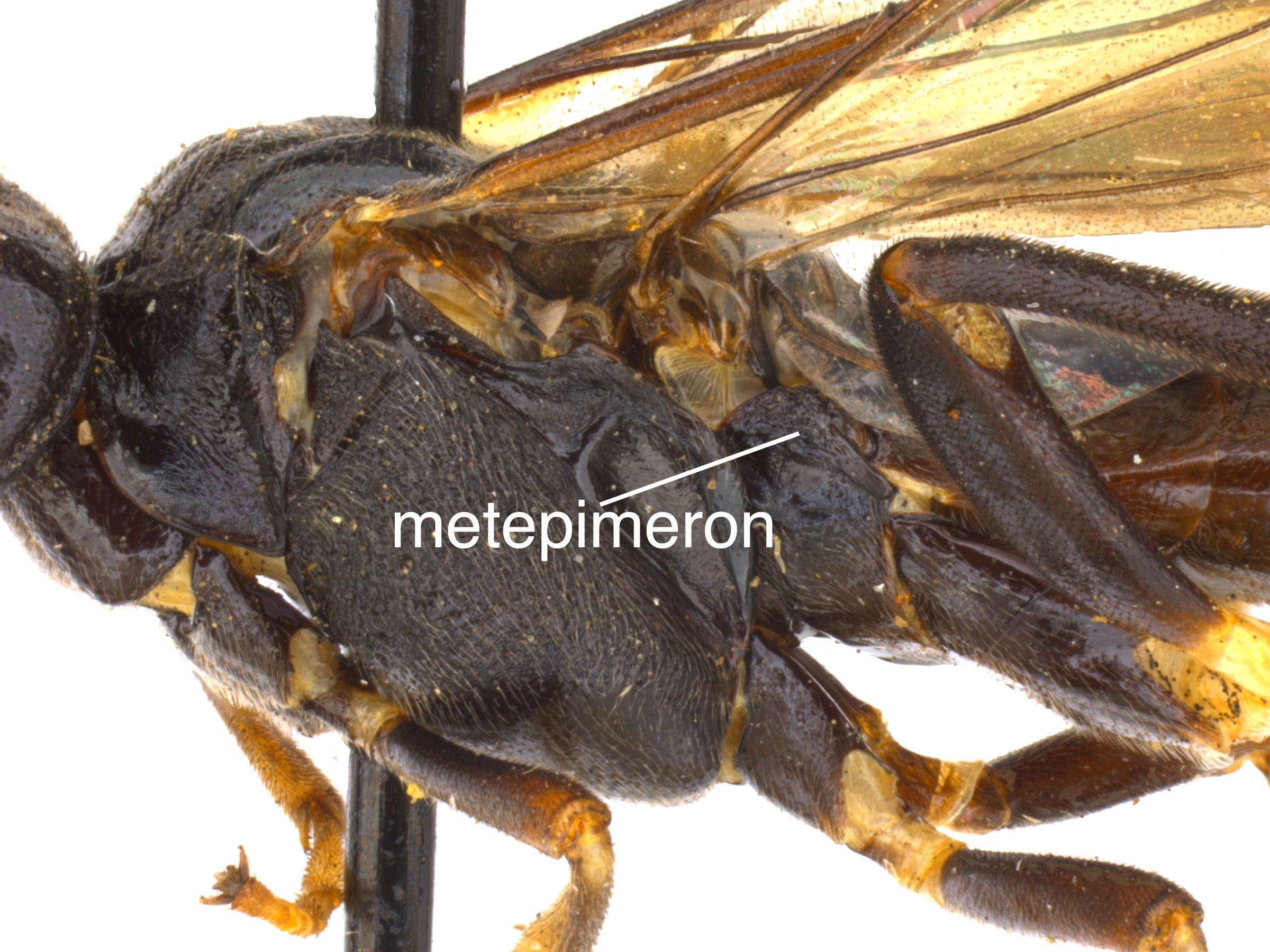 separated from metepisternummetepisternum:
separated from metepisternummetepisternum: by distinct furrowfurrow:
by distinct furrowfurrow: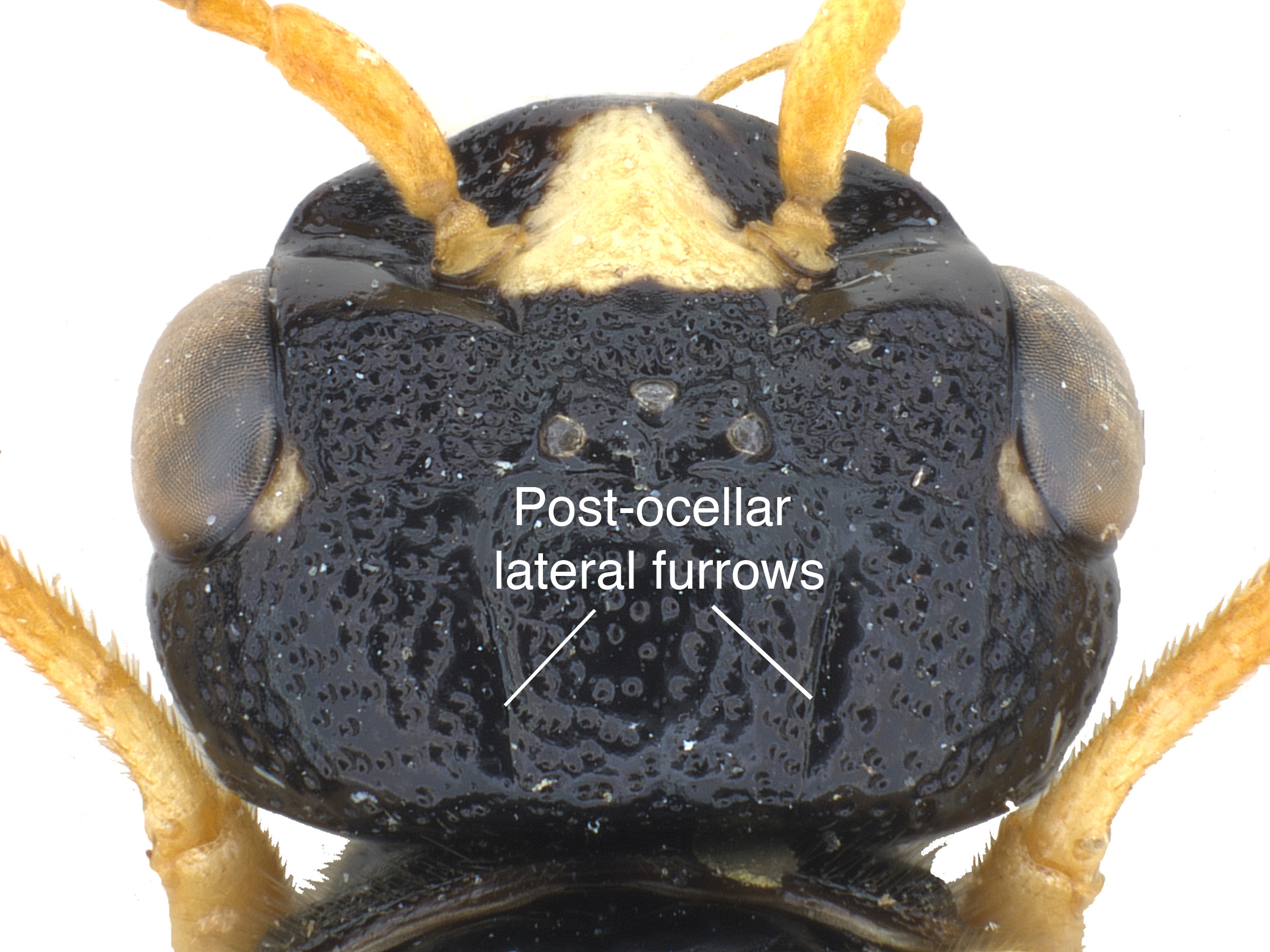 (Goulet 1992Goulet 1992:
(Goulet 1992Goulet 1992:Genus characters
 longer than medial length of the clypeusclypeus:
longer than medial length of the clypeusclypeus: (Gibson 1980aGibson 1980a:
(Gibson 1980aGibson 1980a: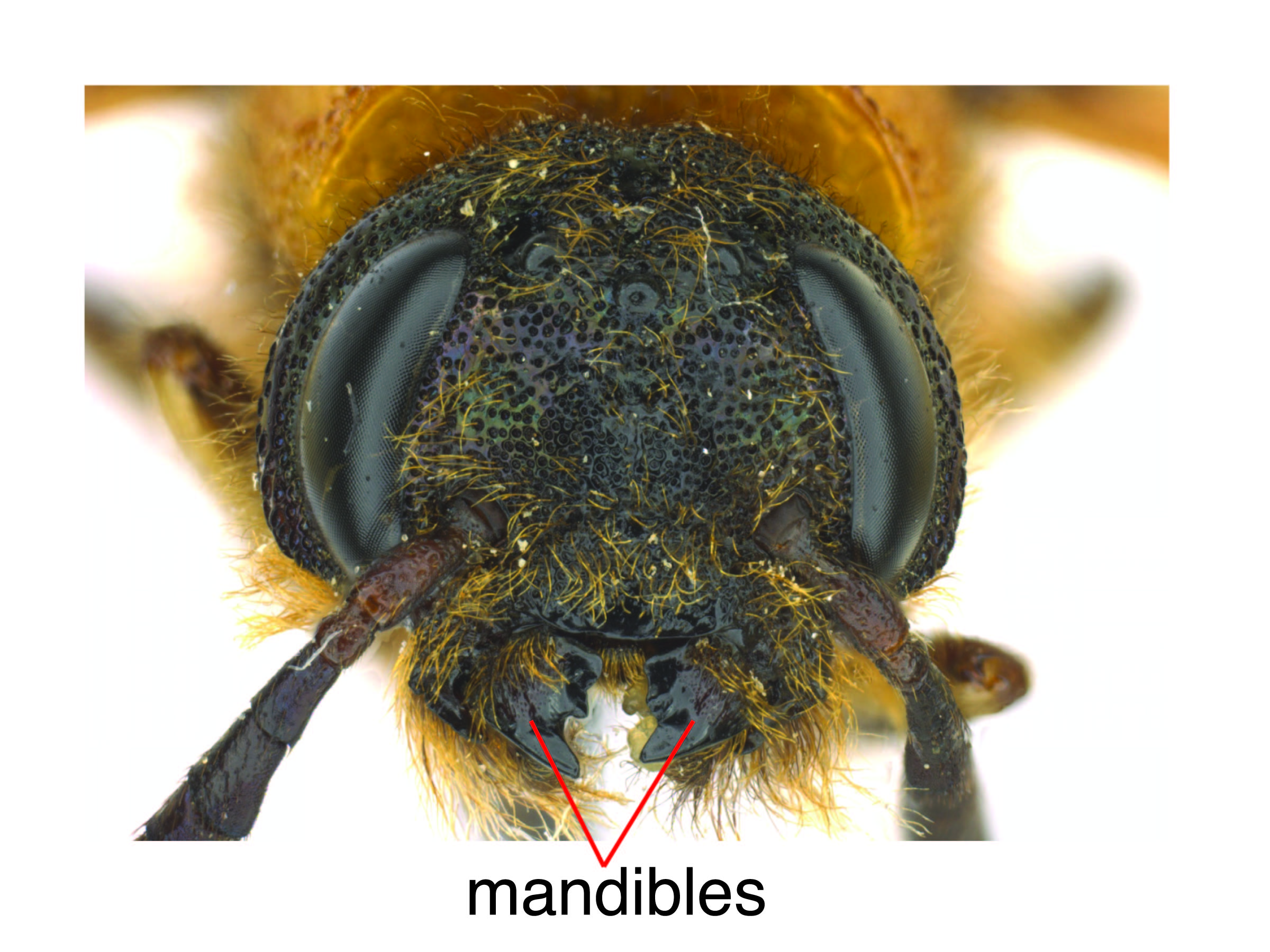 to top of compound eye (Gibson 1980aGibson 1980a:
to top of compound eye (Gibson 1980aGibson 1980a: vein 2A+3A complete, connected to 1A by crossveincrossvein:
vein 2A+3A complete, connected to 1A by crossveincrossvein: anal crossveinanal crossvein:
anal crossveinanal crossvein: vein 2r present (Goulet 1992Goulet 1992:
vein 2r present (Goulet 1992Goulet 1992: vein M intersecting Sc+R basalbasal:
vein M intersecting Sc+R basalbasal: veins 1m-cu and Cu1 120°–150° (Goulet 1992Goulet 1992:
veins 1m-cu and Cu1 120°–150° (Goulet 1992Goulet 1992: anal crossveinanal crossvein:
anal crossveinanal crossvein: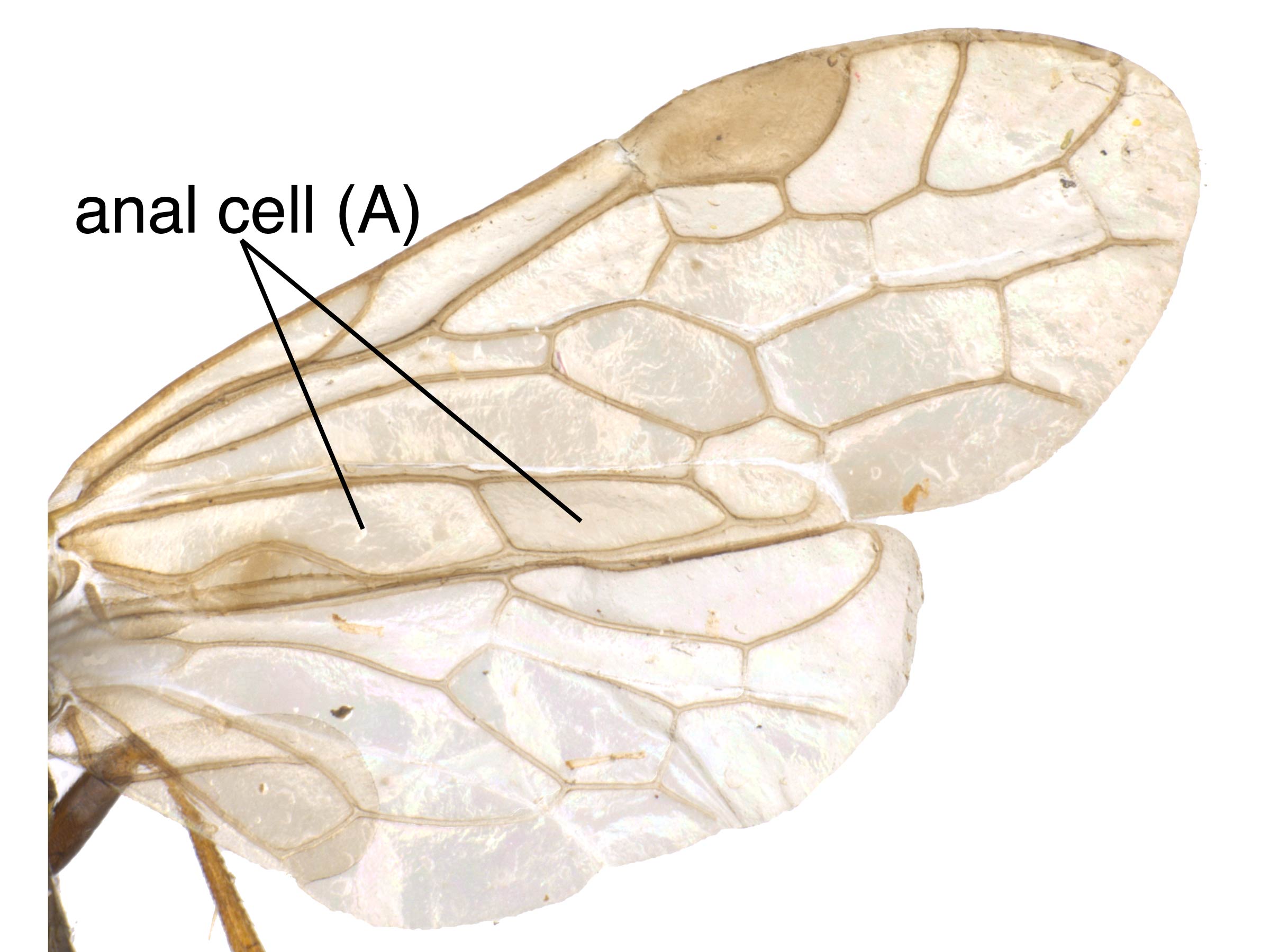 ; anal veins appearing fused for a short distance (Gibson 1980aGibson 1980a:
; anal veins appearing fused for a short distance (Gibson 1980aGibson 1980a: distinctly angled on lower posterior corner (Gibson 1980aGibson 1980a:
distinctly angled on lower posterior corner (Gibson 1980aGibson 1980a: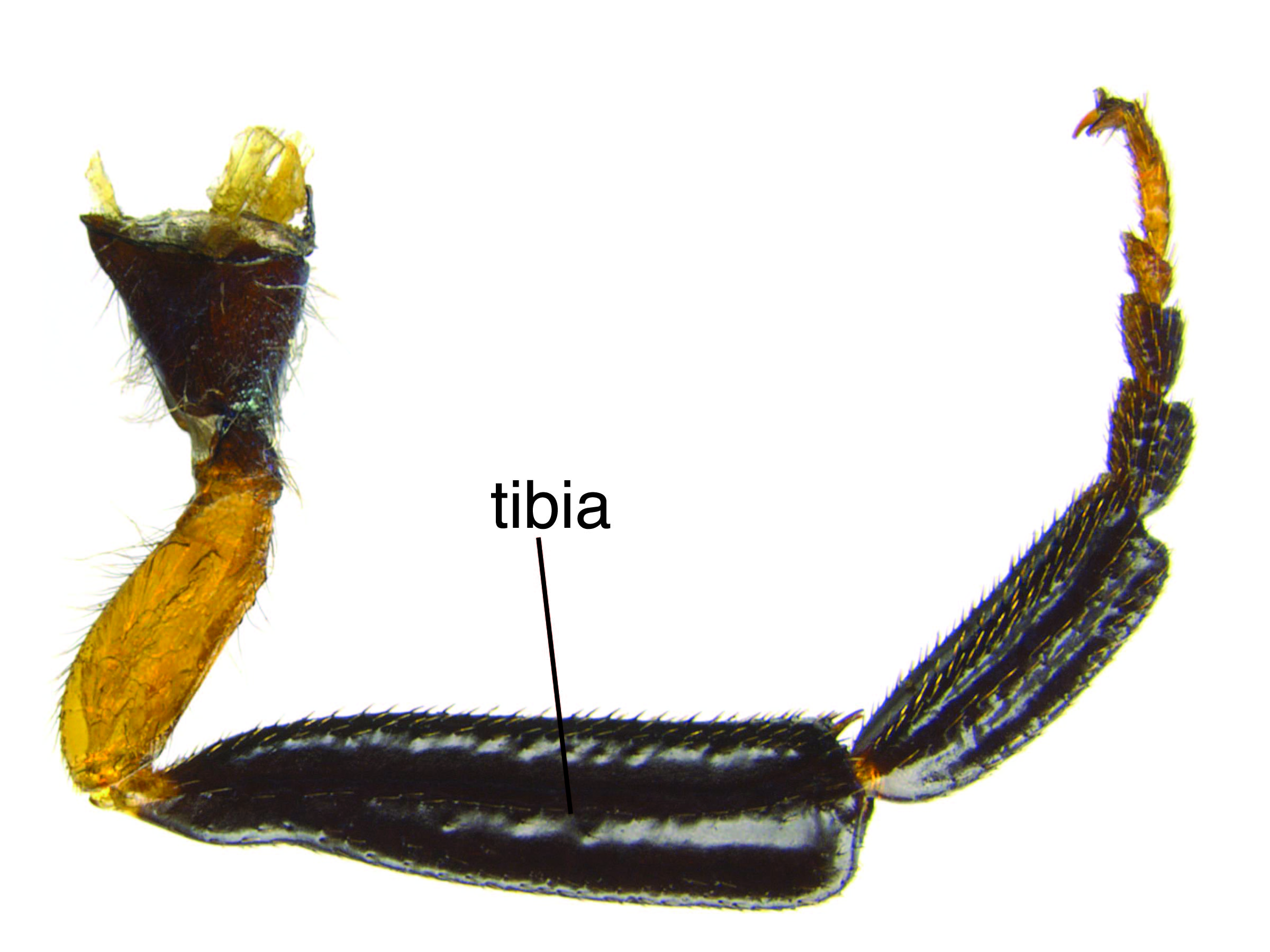 about as long or slightly longer than the femurfemur:
about as long or slightly longer than the femurfemur: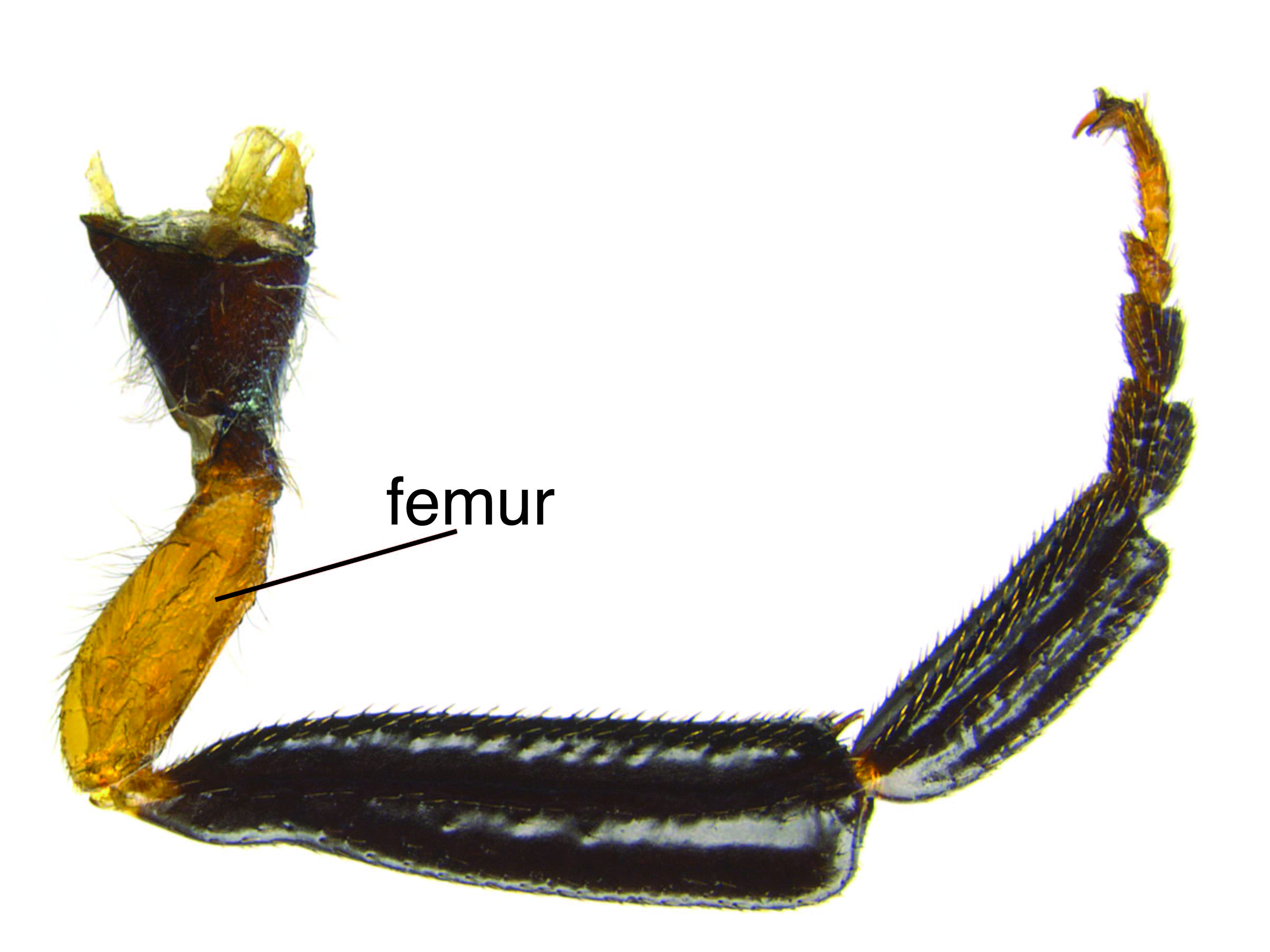 and trochantertrochanter:
and trochantertrochanter: (Gibson 1980aGibson 1980a:
(Gibson 1980aGibson 1980a: bifidbifid:
bifidbifid: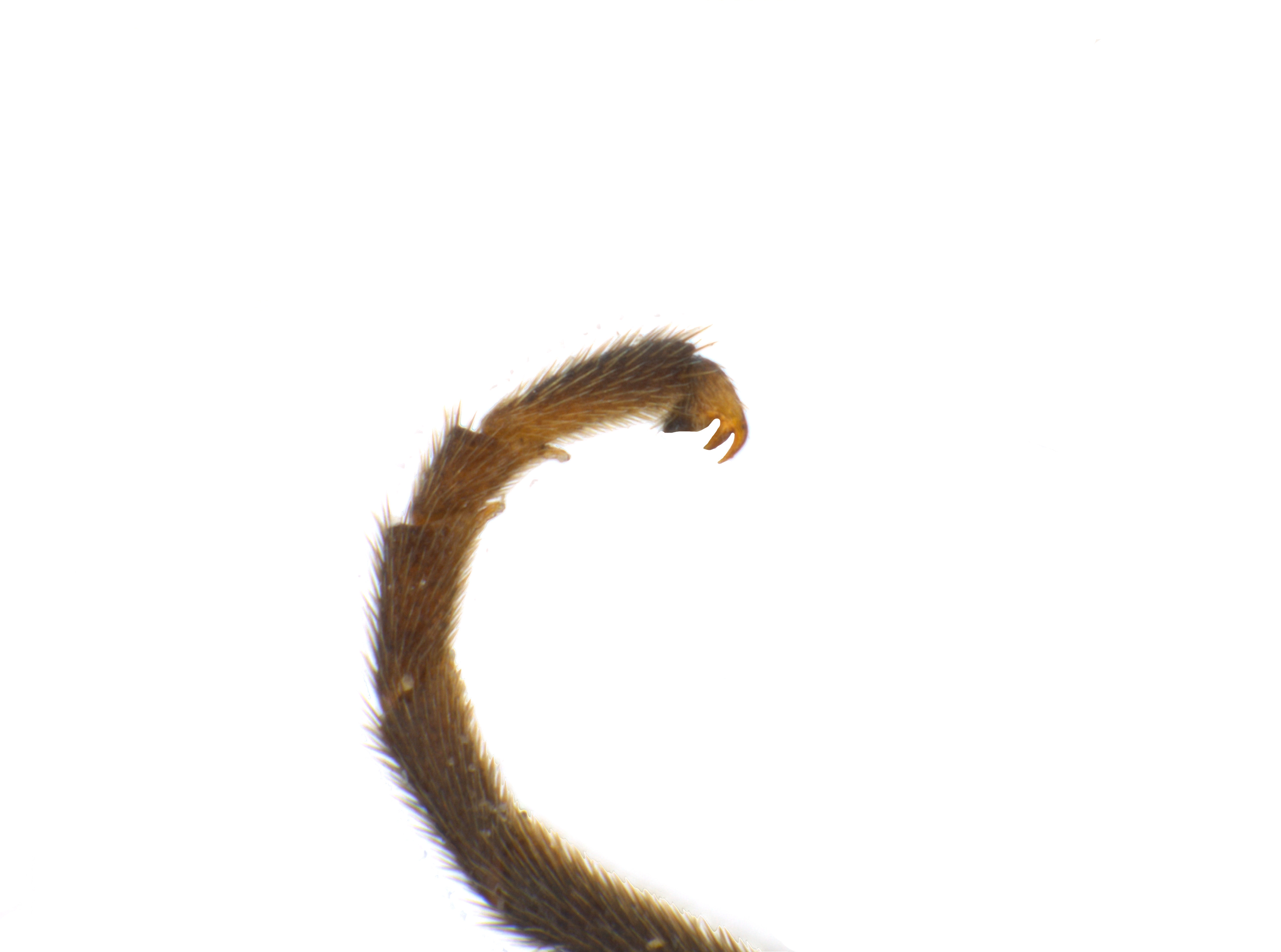 (Gibson 1980aGibson 1980a:
(Gibson 1980aGibson 1980a: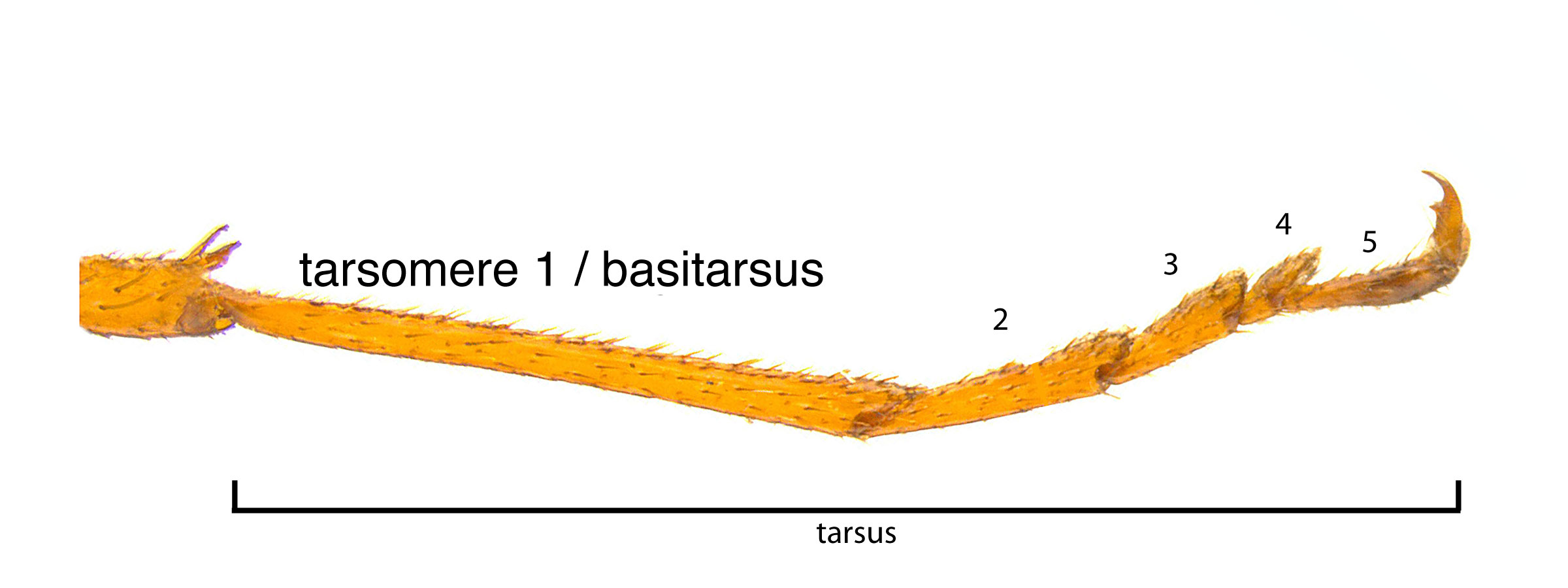 less than half as long as the hind tibiatibia:
less than half as long as the hind tibiatibia: and about equal to remaining tarsomeres (Gibson 1980aGibson 1980a:
and about equal to remaining tarsomeres (Gibson 1980aGibson 1980a:Deda can be confused with similar species in the subfamily Tenthredininae. It can be distinguished from most other genera by the expanded metepimeronmetepimeron:
the dorsal portion of the metapleuron
 , long labrumlabrum:
, long labrumlabrum:
a sclerotized structure on the front of the head between the clypeus and mandibles
 , and the centered anal crossveinanal crossvein:
, and the centered anal crossveinanal crossvein:
a crossvein that goes through the center of the basal anal cell
. Deda can be distinguished from closely related Macrophya by the relative length of the hind leghind leg:
the third and posterior-most leg
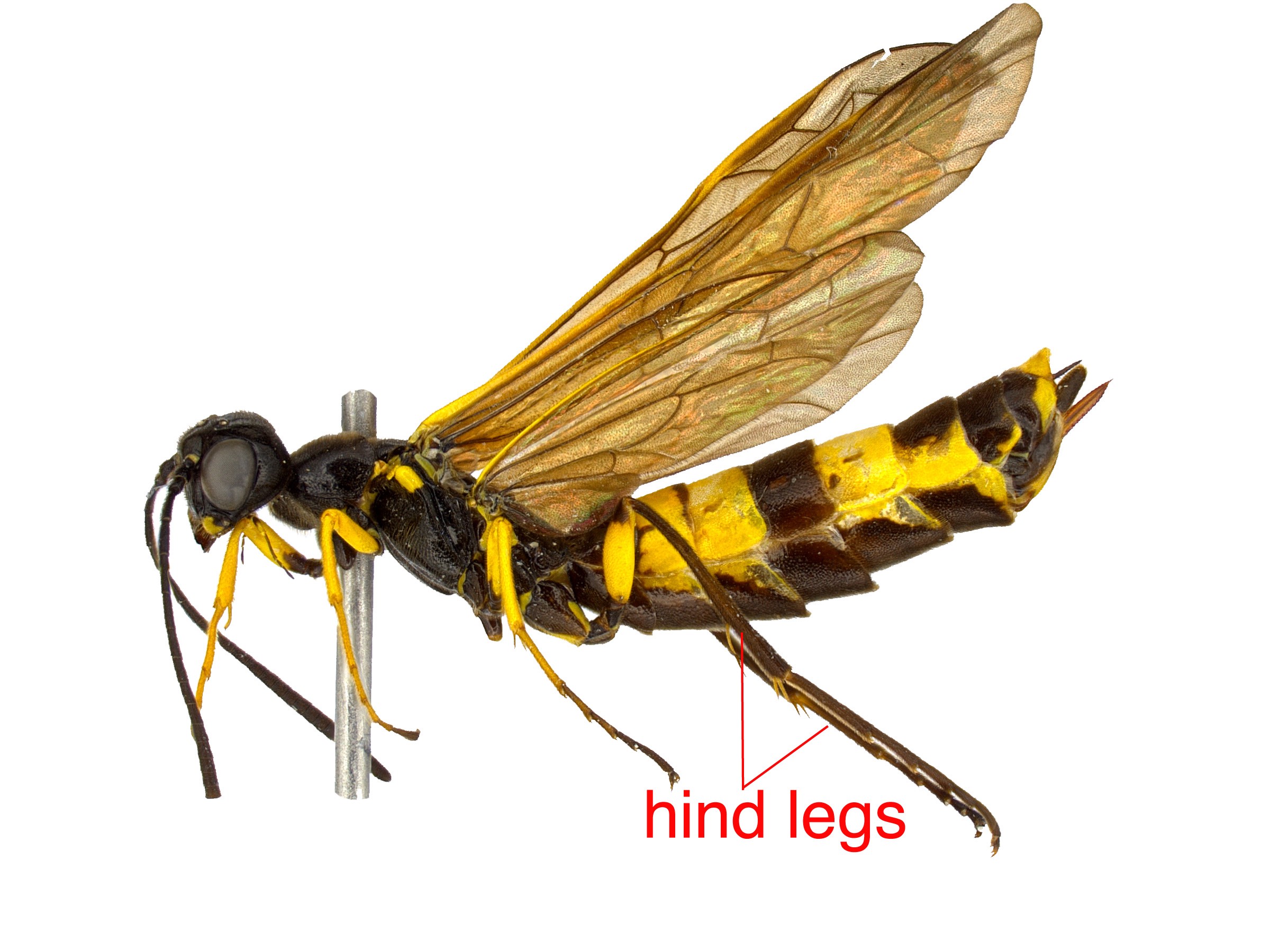 segments and by the size of the eye as viewed from the side (Gibson 1980aGibson 1980a:
segments and by the size of the eye as viewed from the side (Gibson 1980aGibson 1980a:
Gibson GAP. 1980a. Deda , a new genus of sawflies from western North America (Hymenoptera: Symphyta, Tenthredinidae). The Canadian Entomologist 112 (3): 249-258.).
none
The hosts of Deda are unknown, but there is a single collection of an adult on Cynopterus terebinthinus (turpentine wavewing) (Gibson 1980aGibson 1980a:
Gibson GAP. 1980a. Deda , a new genus of sawflies from western North America (Hymenoptera: Symphyta, Tenthredinidae). The Canadian Entomologist 112 (3): 249-258.).
unknown
World: The genus is present in North America (Taeger et al. 2010Taeger et al. 2010:
Taeger A, Blank SM, and Liston AD. 2010. World Catalog of Symphyta (Hymenoptera). Zootaxa 2580: 1-1064.).
North America: Deda occurs in western United States, with records from California, Oregon, and Nevada (Gibson 1980aGibson 1980a:
Gibson GAP. 1980a. Deda , a new genus of sawflies from western North America (Hymenoptera: Symphyta, Tenthredinidae). The Canadian Entomologist 112 (3): 249-258.).
Map data from: GBIF.org (29 October 2019) GBIF Occurrence Download Deda and the Smithsonian National Museum of Natural History Entomology Collection (USNM) and the Oregon State Arthropod Collection (OSAC)
Details about data used for maps can be found here.